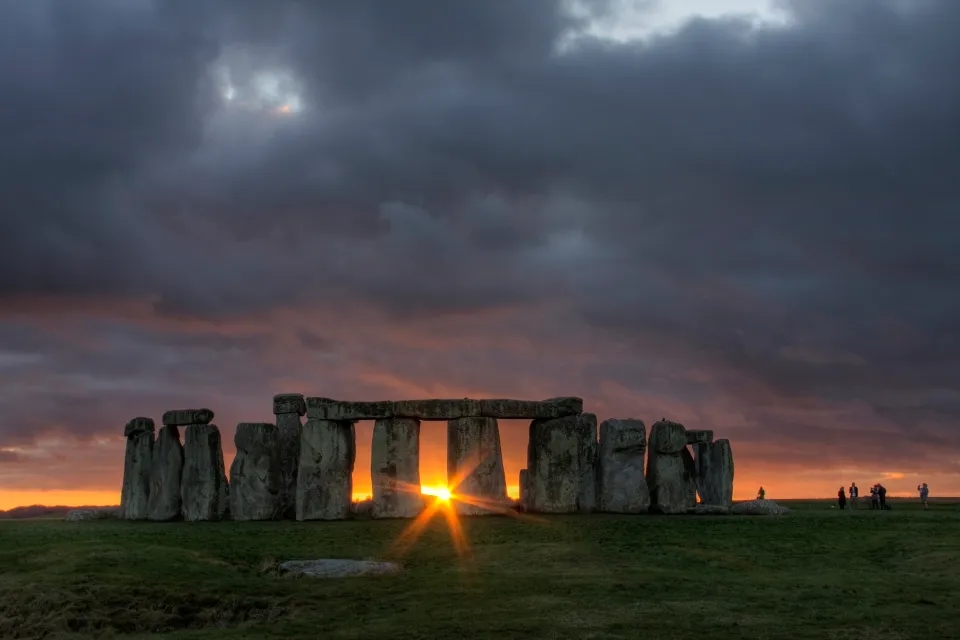
You don’t have to delve very deeply into the history of astronomy to come into contact with the problems of time measurement. The three natural units of time measurement, the solar day, the solar year, and the lunar month are all astronomical phenomena. Unfortunately, these three units are all mutually incommensurable. That is, there is not a whole number of solar days in a solar year, or a lunar month, or lunar months in a solar year. This leads us into the problems of calendrics, that is the attempt to create a reasonable system incorporating the three basic units in order to be able to mark the passing of time. Humanity has come up with more than a handful of differing attempts to solve this problem over the millennia.
One initial problem is where to place the beginning or the end of one solar cycle. Currently, in the western world people, following the Gregorian solar calendar, use the more than somewhat arbitrary 31st day of December as New Year’s Eve, that is the end of a cycle and the following day 1st January as New Year’s Day the beginning of the next cycle. This choice doesn’t appear to have any rational or astronomical foundation; it just is. The Gregorian calendar is by no means the only calendar in use throughout the world and 1st of January is also not the only acknowledge starting point of a solar cycle.
The Jewish calendar is a lunar solar calendar and has not just one but four different ends/starts to the year. These are 1st Nisan, the first month in the biblical calendar, the ecclesiastical new year. 1st Tishrei the seventh month in the biblical calendar, the civil new year, on which the year number advances; this day is known as Rosh Hashanah. The 1st of Shevat, the eleventh month in the biblical calendar, is the new year of trees. However, another school says it falls on the 15th of Shevat. The fourth is 1st Elui the sixth month in the biblical calendar. Due to the use of seven intercalery months over a cycle of nineteen years in order to bring the lunar year 354 days into line with the solar year of 365 days the four Jewish new years day fall on different days on the Gregorian calendar each year.
The Lunar New Year, celebrated in several East Asian cultures, based on a lunar solar calendar usually falls on the second new moon after the winter solstice (rarely the third if an intercalary month intervenes). In theGregorian calendar, the Lunar New Year begins at the new moon that falls between 21 January and 20 February.
The Persian calendar, currently used in Iran and Afghanistan, is a solar calendar that has been in use for about four thousand years during which time it has evolved. The Persian New Year begins at the midnight nearest to the instant of the northern spring equinox, as determined by astronomic calculations for the meridian (52.5°E). It is, therefore, an observation-based calendar, as is traditionally the Jewish calendar, observation of the new moon determining the beginning of the month, unlike the Gregorian, which is rule-based.
Because the Christian calendar was solar, at that time still the Julian calendar, and the Jewish calendar was lunar-solar, the, then new religion, Islam deliberately chose a pure lunar calendar to differentiate themselves from the other monotheistic religions. The Islamic New Year is the 1st of Muḥarram, the first month of the Islamic calendar. Because the lunar calendar is approximately eleven days shorter than the Gregorian calendar the Islamic New Year moves backwards by eleven days each year against the Gregorian calendar taking a bit more than thirty-three years to complete a cycle through it. Like the Jewish calendar the Islamic calendar is an observation-based calendar, the first of the month occurring when the new moon is first observed.
There are other calendars but the examples I have discussed, unlike the Gregorian calendar, all have a New Year’s day, which is defined astronomically and not arbitrarily. As a historian of astronomy and calendrics living in the northern hemisphere, I decided several years ago that the Renaissance Mathematicus end and beginning of the annual solar cycle takes place at winter solstice when the old year dies, and the new year is born. The northern winter solstice is the day in the year when the sun is directly overhead at noon at the Tropic of Capricorn, currently 23°26′10.2″ south of the equator. Tropic comes from Latin tropicus “pertaining to a turn,” from Greek tropikos “of or pertaining to a turn or change.” It is the point when the sun turns on its journey southwards and begins to journey northwards towards the Tropic of Cancer and the summer solstice. The northern winter solstice usually falls on the 21st or 22nd December on the Gregorian calendar.
Today is the northern winter solstice and I wish all my readers a healthy and happy start in the new solar cycle. I thank you for having read my scribblings over the last twelve months and hope you will continue to do so. I particularly thank all those, who have taken the time and trouble to comment and to correct my errors both orthographical and factual.
HAPPY SOLSTICE!